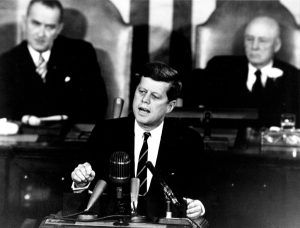
As a boss, you can (and often will) ask your employees to carry out tasks for you. This is entirely normal and in line with the functions of a leader. After all, task allocation and delegation are essential to running a successful organization.
But it’s important to recognize that exercising the power you have due to your position is not the same as being a leader who influences those around you.
Leadership, in all its forms, goes beyond a title or seniority level. Leaders who influence are able to inspire others and achieve incredible results. This has less to do with telling people what to do and more to do with influencing them.
When it comes down to it, influence is a critical element of leadership. It can drive teams to achieve what appears to be impossible and separates a good company from a market leader. The simple fact is that no manager can perform as they should unless they’re also able to influence those around them.
The Characteristics of Influence
The Canadian-American motivational public speaker and author Brian Tracy perfectly summed up how leaders influence. He said, “Leaders think and talk about solutions. Followers think and talk about the problems.”
This is what differentiates a leader from the rest of the pack. True leaders are always in action. They don’t spend time musing on problems that breed frustration and anxiety. By always doing, leaders inspire others around them.
The influential characteristic of relentless forward motion has truly incredible ramifications within organizations. Take what Chris Lewis, the retired Commissioner of the Ontario Provincial Police, wrote in his book Never Stop on a Hill, which dealt with his time in the police force. On the subject of leadership, he references Jennifer Evans, who was the chief of police when he worked there.
She said (paraphrasing), “Leaders inspire others to accomplish things they would not necessarily believe they could.” Some of the biggest successes companies can experience are when they overcome a challenge they didn’t think was possible.
 The NASA moon landing project in the 60’s is a fantastic example of this. On May 25, 1961, President Kennedy declared that, before the decade was out, they would land on the moon. That is the epitome of a seemingly impossible challenge. It’s hard for anyone who wasn’t alive back then to understand it now. Landing on the moon was the stuff of science fiction.
The NASA moon landing project in the 60’s is a fantastic example of this. On May 25, 1961, President Kennedy declared that, before the decade was out, they would land on the moon. That is the epitome of a seemingly impossible challenge. It’s hard for anyone who wasn’t alive back then to understand it now. Landing on the moon was the stuff of science fiction.
Now, we can go back and map all the major milestones and challenges they faced to do this and assess the possibility of achieving it. With hindsight, we know that it wasn’t just possible but doable. This is the exact same approach good leaders who influence take.
When confronted with a huge challenge, your team may be anxious or unsure. In short, they don’t have faith. As a leader, you first need to demonstrate the possibility of succeeding. They need to be convinced that it is, in fact, possible. Once you’ve done that, it’s time to show that it’s probable. Not just that you can do it but that you very likely will.
From there, it’s simply a matter of executing it.
Identifying Organizational Leaders Who Influence
As a director or C-level executive, it’s essential to look out for an individual’s ability to influence when promoting an employee to a higher management position. Bear in mind that this doesn’t just mean attempting to gauge it in the moment or during an internal interview. You need to determine what characteristics influential people possess and have your managers assess this on an ongoing basis during employee reviews.
This ability to influence should go beyond those in their team. Within an organization, influence should be multidimensional, spanning their direct reports, peers, and even those who are higher than them in the organization. The most successful people are those who influence through words, actions, decisions, work ethic, decision-making ability, decisiveness, reasonableness, open-mindedness, logic, and numerous other characteristics.
We tend to look at hard, performance-related data when choosing leaders. And this should be taken into account. But as an individual climbs the ladder within an organization, they will inevitably require a broader and more holistic skill set.
Planning for this and incorporating leaders who influence into your promotion decision-making criteria can directly impact the extent of the influence you exert over your market niche.

